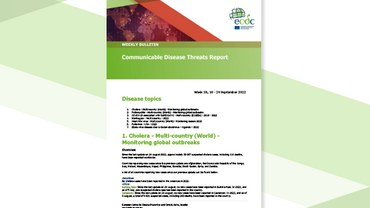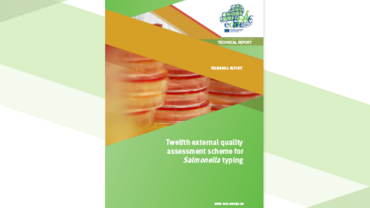External quality assessment scheme for influenza virus detection, isolation and culture for the European Reference Laboratory Network for Human Influenza, 2013
In September/October 2013, the European Reference Laboratory Network for Human Influenza (ERLI-Net) conducted an external quality assessment (EQA) for the rapid detection of influenza virus, its isolation and culture. The objectives of the exercise were to a) measure the performance of participating laboratories through an independent mechanism and b) assess the capacity and performance of the laboratory network.
Thirty-six laboratories from 29 European countries participated in the exercise. Each participant received a panel of ten coded samples of influenza A and B viruses that are circulating, or have recently circulated, in humans. The proportion of laboratories achieving the maximum rapid detection proficiency score rose to 80% in 2013, compared with 76% in 2010 and 69% in 2008.
Executive summary
In September/October 2013, the European Reference Laboratory Network for Human Influenza (ERLI-Net; previously called CNRL) conducted an external quality assessment (EQA) for the rapid detection of influenza virus, its isolation, and culture. This was the third rapid detection and culture EQA panel for European influenza reference laboratories distributed by ERLI-Net since the European Influenza Surveillance Network (EISN) was established in 2008. The objectives of the exercise were to a) measure the performance of participating laboratories through an independent mechanism and b) provide whole network information on the capacity and capability for rapid detection by PCR, influenza virus culture, and strain characterisation within a defined reporting timeframe.
All ERLI-Net member laboratories were invited to participate. Thirty-six laboratories from 29 European countries participated in the exercise. Each participant received a panel of ten coded samples (including a negative sample) of influenza A and B viruses that are circulating, or have recently circulated, in humans. All participating laboratories returned results for rapid detection of influenza viruses using PCR or other methods. Results for influenza virus culture were returned by 30 of the 36 participating laboratories, with 26 reporting strain characterisation results.
The proportion of laboratories achieving the maximum rapid detection proficiency score rose to 80% in 2013, compared with 76% in 2010 and 69% in 2008. There was particular improvement in the number of laboratories that were able to provide lineage determination for influenza B samples. Four false negative but no false positive samples were reported, which signifies an improvement from 2010 when three false negatives and two false positives were recorded, but still indicates possible sensitivity issues in some assays. Altogether, the panel was a comprehensive test of the laboratories’ ability to detect recently circulating influenza viruses.
Avian influenza A(H7N9) in humans was first reported in China in March 2013. Network laboratories rapidly worked to design and implement assays that would enable them to detect and type this emerging virus. The 2013 EQA provided the first opportunity to assess A(H7N9) detection capabilities across the European network, and it proved that the emergency response mechanism worked well. Thirty-three of the 36 laboratories were able to detect, type and subtype the A/Anhui/1/2013 virus while the remaining three laboratories detected a non-subtypeable influenza A virus.
The laboratories which returned virus culture results performed well, with detailed strain characterisation being reported in 80% of cases. Five laboratories failed to recover virus from a total of 11 samples, highlighting the necessity for optimal cell culture systems and procedures, informed by guidance from the network on current best practise. In total, the number of laboratories participating remained constant with thirty participating laboratories.
Previous improvements in strain characterisation were consolidated in 2013, with modest improvements to the average score compared with 2010: 27/30, as compared to 26.4/30 earlier. The majority of participating laboratories used haemagglutination inhibition (HI) assay to determine strain identity rather than sequencing, emphasising the need for high-quality virus culture to provide virus isolates for HI. Genetic characterisation (sequencing) was performed by 13 laboratories and resulted in very accurate characterisation (11 laboratories achieved full scores). Three training courses in sequencing techniques have been provided since 2010, with ten of the 13 laboratories (77%) attending. This may account for increased EQA participation and the high quality of results obtained with this technique.
Overall, the 2013 influenza virus rapid detection and culture EQA demonstrated a modest improvement in performance in culture and strain characterisation. Rapid detection also continued to improve, especially with influenza B virus lineage determination. One of the most encouraging aspects of the 2013 EQA panel was the fact that it emphasised the strength of the network and its constituent laboratories. This was demonstrated by the rapid development of testing capabilities for influenza A(H7N9) virus, which was reconfirmed in this quality assurance exercise.





